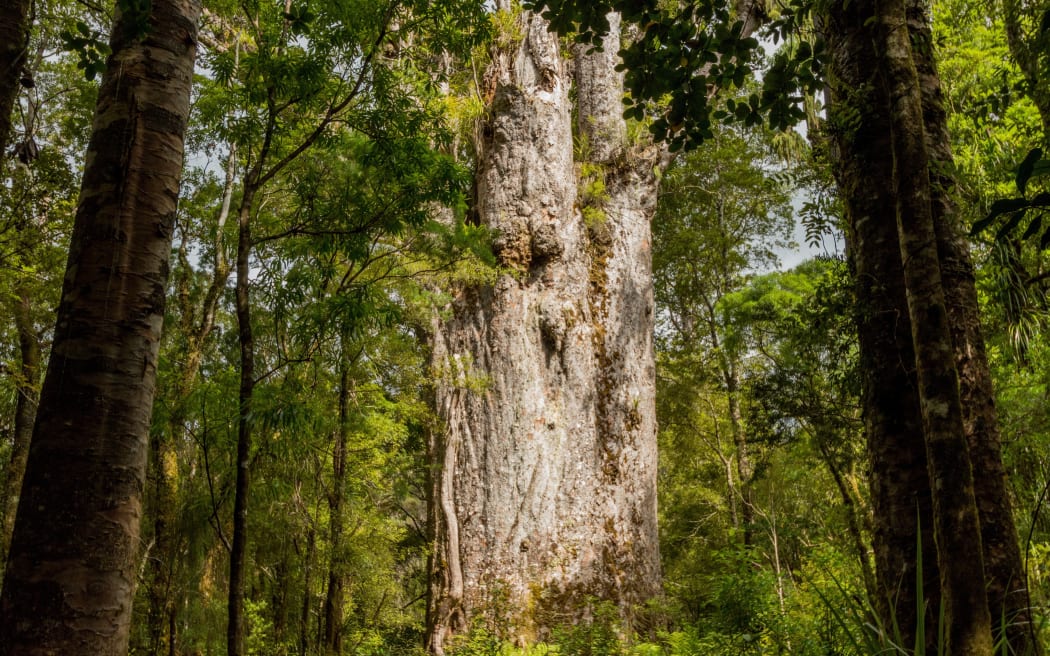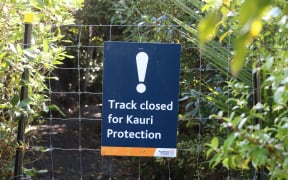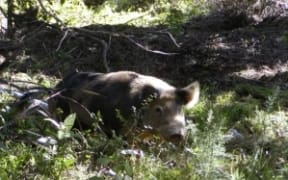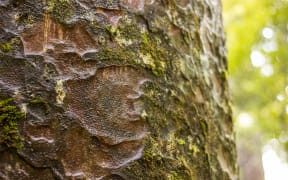Northland iwi are insisting that for now there is no need to close the walking tracks in the ancient forest home to Tāne Mahuta - despite kauri dieback moving ever closer to the taonga.

Tane Mahuta, one of the largest Kauri trees in Waipoua Forest. Photo: 123rf.com
Conservationists and scientists have called for tracks to be closed to limit the disease spreading - and in Northland's Waipoua Forest the tracks and boardwalks to the trees have recently been upgraded.
Iwi Te Roroa general manager Taoho Tane said while the disease was found in a tree just 60 metres away from Tāne Mahuta, closing the tree's track was not the answer.
"It's not as simple as closing the track and then suddenly you've got people that know that there's this iconic national and international taonga or treasure there.
"They will stop, they will find a way into the tree and there's a road network of about two to three kilometres where people can park up and get into the tree."
The 51-metre high forest giant was blessed by local kaumātua and kuia yesterday, as part of the iwi response to kauri dieback in the Waipoua Forest.
Mr Tane said iwi were drafting a response plan, with support from the scientific community, to map out how to gather information to best protect trees like Tāne Mahuta.
The Department of Conservation has proposed 34 full or partial track closures across Northland, Coromandel, Great Barrier Island and Tauranga.
Many of the tracks have low visitor numbers, and while Tāne Mahuta is undoubtedly one of the most popular visitor attractions, it's not listed in the proposal.
Laree Furniss, DOC Project Manager for the Kauri Dieback Recreation Project, said the department considered how feasible it was to enforce closures on popular tracks.
"That's part of what we looked at in regards to what tracks we may or may not close. Can we actually close it and enforce that closure? Especially around sites that have high visitor use and might be very close to a population."
It was difficult to manage and the 200,000 visitors a year had to play their part in limiting the spread of the disease, she said.
Mr Tane said Te Roroa had reinstated Tāne Mahuta ambassadors, normally not at work during this time of the year, to educate visitors as an extra protective measure.
While he was aware of calls to close the track, he said iwi were heading the response as best they could.
"At the end of the day we're mindful that when everything cools down, we live here. We look after that tree day and night. When everyone is gone our security team are up there ensuring there is nobody trying to get in."
Northland Environmental Protection Society chairperson Fiona Furrell said things could be taken a step further.
"There's photos on the internet, regularly, of tourists taking photos of Tāne Mahuta and other kauri trees in the forest and you can tell from the angle of the photo that they were not on a track."
The pathogen that causes kauri dieback is called hytophthora agathidicida. It was discovered in 2009 and formally named in 2015. It can sense a kauri tree's roots, and swim towards them to cause infection. There is no cure for kauri dieback and the disease kills most kauri it infects. It can be spread by minute pieces of soil.





